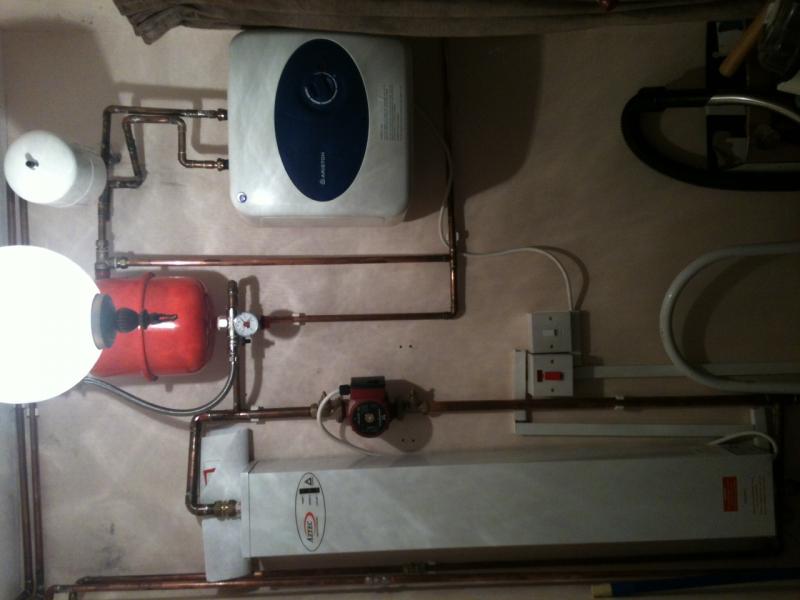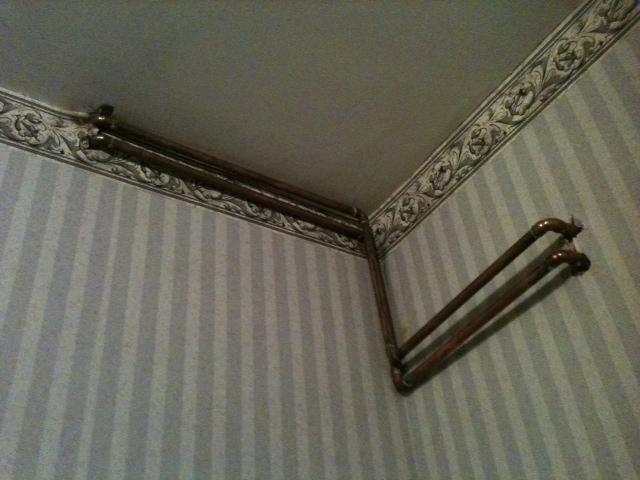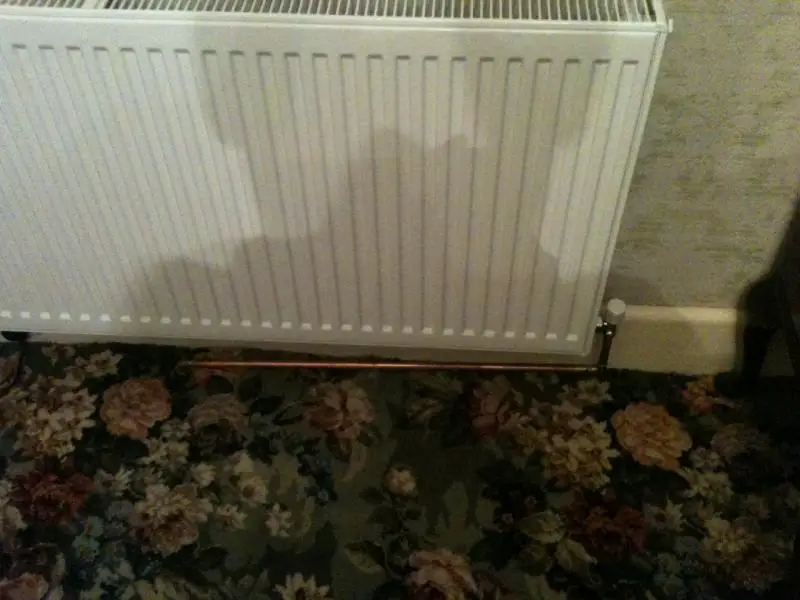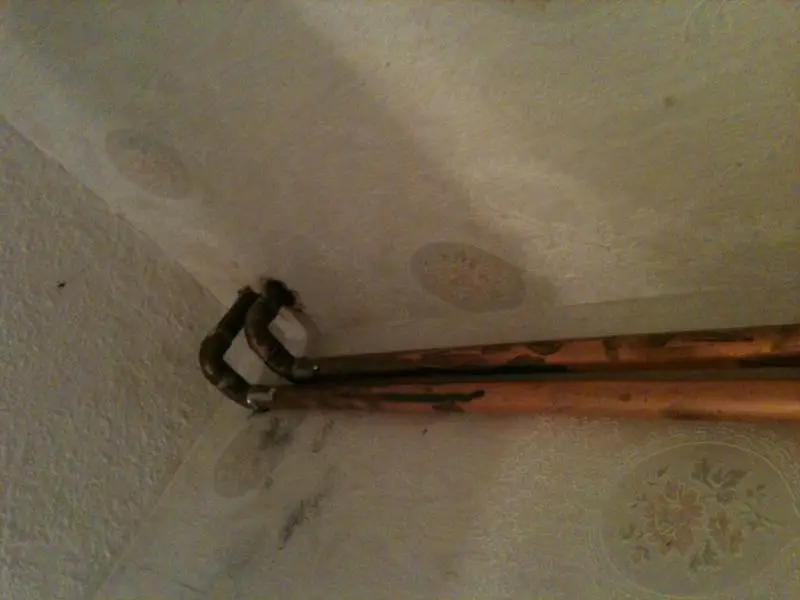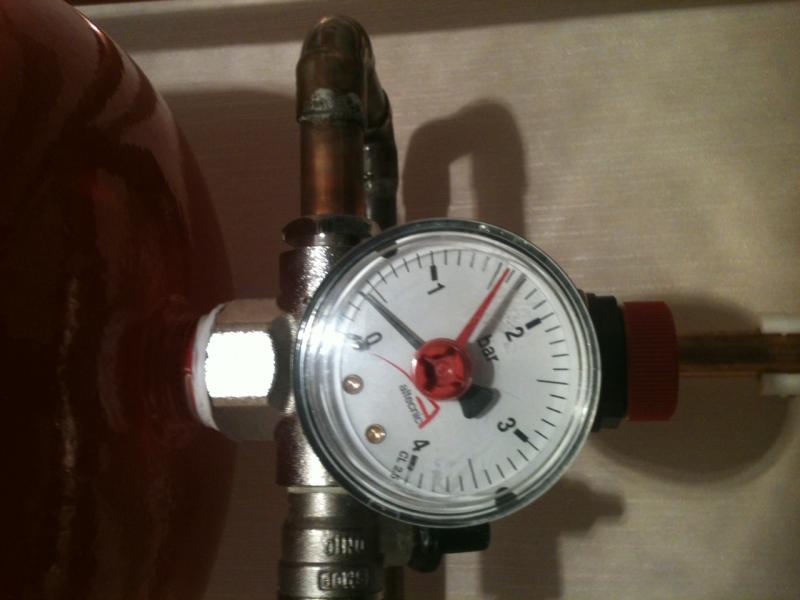Just for the benifiet of those of us who don't have much to do with mechanical services, can someone point out the full list of faults with the plumbing?
From what can be seen in the pictures:
Sideways pic, however the larger white box is a Trianco Aztec electric boiler, flow in at the bottom, flow out at the top. Pump (black/red) to the side of it. Pump appears to be wired into the boiler as it should be.
The red cylinder is an expansion vessel, below which is a pressure gauge and filling loop (the silver braided hose). There should be a pressure relief valve also - does not appear to be one, which means in the event of a fault, the hot water will expand and cause one or more joints to fail under high pressure, which is extremely dangerous - if the water is heated over 100c, it will stay as water under pressure, then when something fails, it will spray out and instantly turn to massive amounts of boiling hot steam. Look on Youtube for the Mythbusters exploding water heater to see what can happen.
The square white box is an Ariston Europrisma stored water heater, again has flow in/out. Usually about 10 litres, water is heated and stored so when the tap is turned on you get a modest amount of instant hot water. Normally installed under a sink and suitable for one or possibly two outlets only. Useless for a bath or shower, so presumably there is also a hot water cylinder elsewhere heated by the Aztec boiler - however that raises the question of why have this smaller heater at all?
The pipes connected to it are not supported in any way, and the excessive numbers of bends will restrict the flow significantly.
The white cylinder above is another expansion vessel, which doesn't appear to be supported either.
All of the soldered joints have far too much solder on them, the pipes are blackened which suggests overheating.
Here, the pipes are not supported at all - no clips or anything else to secure them.
That short stub of pipe with an end cap on is totally useless, and should not be there. Suggests this is old pipe which has been reused, or it was installed and then significantly modified. Note the vast amounts of solder on the outside of the pipes, and the black/green everywhere which is a sign of overheating when it was soldered.
There are multiple couplers in the straight sections of pipe, all of which are totally unnecessary, and also suggests random old bits of pipe were used rather than new.
Another unsupported pipe, appearing from some random position in the floor.
Proper way is to have the pipe directly into the floor under the valve, or if that is not possible for whatever reason, both pipes should exit the floor in the same place, then go up and be fixed to the wall behind the radiator, then drop down with a bend into the valves, so you don't see most of the pipe.
Burnt and blackened mess running down pipes, probably due to excess flux being used and not being cleaned away afterwards. Far too much solder.
Pressure gauge, red line indicates correct system pressure, black should be at the same place.
Normally pressure should be 1-2 bar, pressure shown is too low, and if falling is due to one or more leaks.


